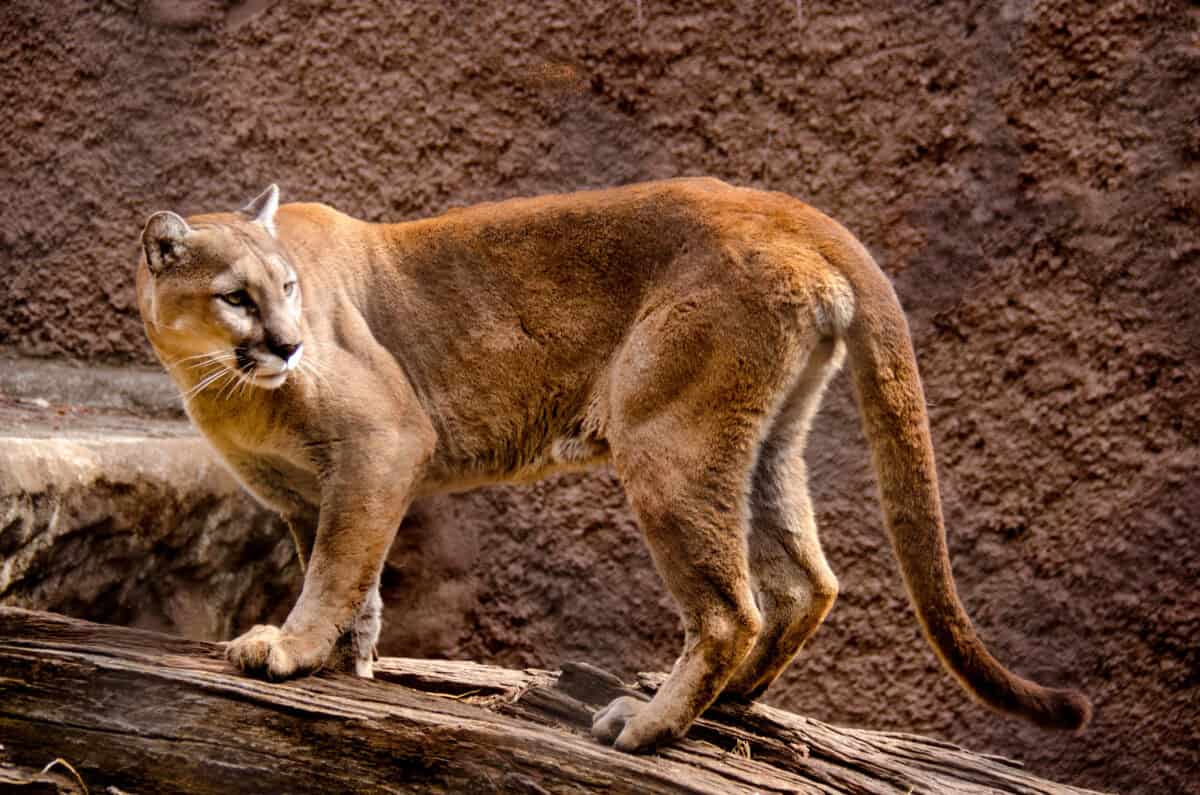North America’s diverse ecosystems host numerous fascinating creatures, but some inspire more fear than wonder. From venomous reptiles to powerful predators, certain species have earned reputations that make humans uneasy. While many of these fears are grounded in legitimate dangers, others stem from misunderstandings or cultural biases. This article explores the 12 most feared animals across the continent, examining both the real threats they pose and the misconceptions that sometimes surround them. Understanding these creatures better can help us appreciate their ecological importance while maintaining appropriate caution when necessary.
12. Grizzly Bears The Continental Icons of Power

Grizzly bears (Ursus arctos horribilis) stand as one of North America’s most formidable predators, with males weighing up to 800 pounds and standing 7 feet tall when upright. Their immense strength allows them to flip 700-pound rocks with ease while foraging, and they can run at speeds reaching 35 miles per hour despite their massive size. These capabilities, combined with their protective nature, especially mother bears with cubs, make them a legitimate source of fear for wilderness enthusiasts. According to National Park Service data, Yellowstone National Park has recorded approximately 44 bear-related human injuries since 1979, a relatively small number considering millions of annual visitors, but enough to maintain their fearsome reputation.
Despite their intimidating presence, grizzly attacks on humans remain relatively rare, typically occurring when bears are surprised, protecting cubs, or defending food sources. Most encounters can be managed with proper precautions like carrying bear spray, making noise while hiking, and proper food storage. Conservation efforts have helped stabilize some grizzly populations after near-extinction in the lower 48 states, though they remain listed as threatened under the Endangered Species Act. The bears now occupy just 2% of their historical range in the continental United States, primarily in Wyoming, Montana, Idaho, and Washington.
11. Mountain Lions The Silent Stalkers

Mountain lions, also known as cougars or pumas (Puma concolor), inspire fear through their stealthy hunting techniques and powerful physiology. These large cats can weigh up to 220 pounds and possess the strongest hind legs in the cat family, enabling them to leap 40 feet horizontally and 15 feet vertically. Their secretive nature means humans rarely see them, even in areas with healthy populations, adding to their mystique and the anxiety they provoke. Mountain lions typically stalk prey from concealed positions before delivering a powerful ambush, a hunting strategy that particularly unnerves humans contemplating wilderness activities.
Fatal attacks on humans remain extremely rare, with fewer than 30 documented deaths in North America over the past 100 years. Most mountain lions actively avoid human contact, preferring deer and other wild prey. However, expanding human development into cougar territory has increased encounters in states like California, Colorado, and Washington. Wildlife officials recommend specific behaviors during rare encounters: stand tall, appear large, maintain eye contact, speak firmly, and never run or turn your back, as these actions might trigger the cat’s instinct to chase. Conservation efforts face challenges balancing mountain lion protection with human safety concerns as suburban areas continue expanding into traditional cougar habitat.
10. Eastern Diamondback Rattlesnakes North America’s Deadliest Serpent

The Eastern Diamondback Rattlesnake (Crotalus adamanteus) earns its fearsome reputation as North America’s largest and most dangerous venomous snake, reaching lengths up to 8 feet and delivering substantial amounts of potent hemotoxic venom. These imposing reptiles possess distinctive diamond-shaped patterns along their backs, large triangular heads, and the iconic rattle that serves as a warning to potential threats. A single bite can deliver enough venom to kill multiple adults without treatment, causing tissue damage, internal bleeding, and potentially organ failure. Their presence throughout the southeastern United States, particularly in Florida, Georgia, and parts of the Carolinas, makes them a legitimate concern for residents and outdoor enthusiasts.
Despite their dangerous capabilities, Eastern Diamondbacks rarely bite humans unless threatened or cornered, preferring to rattle in warning and retreat when possible. Most bites occur when snakes are deliberately provoked or accidentally stepped on. Medical advances have significantly reduced fatalities, with current mortality rates under 1% when proper treatment is received. However, bites often result in significant tissue damage requiring extensive medical care. Habitat loss represents their greatest threat, with populations declining by more than 80% in some regions due to urban development and persecution. Conservation efforts now focus on protecting remaining habitats and educating the public about these ecologically important predators.
9. American Alligators Ancient Predators of the South
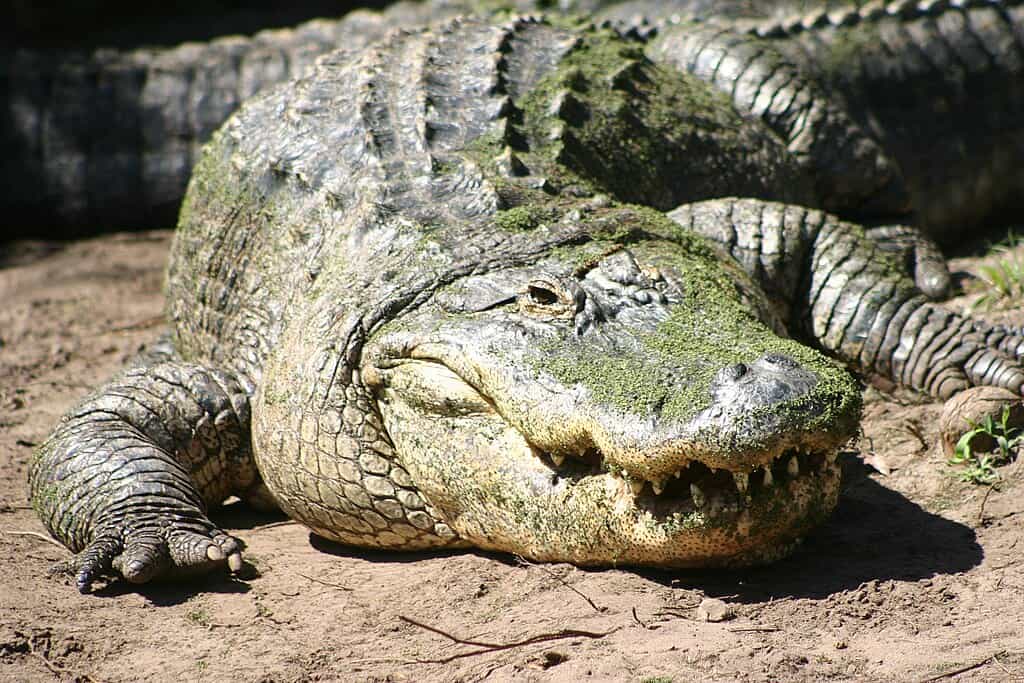
American alligators (Alligator mississippiensis) embody an ancient fear with their prehistoric appearance and powerful predatory capabilities. Males can grow up to 15 feet long and weigh over 1,000 pounds, with the strongest bite force of any living animal—around 2,125 pounds per square inch. These reptiles inhabit freshwater wetlands throughout the southeastern United States, particularly Florida and Louisiana, where they occupy prime recreational areas frequented by humans. Their ability to remain nearly invisible while submerged, with only their eyes and nostrils above water, adds to the unease they inspire among residents and tourists alike.
Despite their intimidating presence, fatal alligator attacks remain statistically rare, averaging fewer than one per year across their entire range. Most aggressive encounters occur when alligators have been illegally fed by humans, losing their natural wariness, or during breeding season when males become more territorial. Conservation success has brought the American alligator back from near-extinction in the mid-20th century to stable populations today, resulting in more frequent human-alligator interactions as development encroaches on wetland habitats. Wildlife authorities in states like Florida maintain nuisance alligator removal programs, typically relocating or humanely dispatching animals that pose risks to people, pets, or livestock.
8. Timber Rattlesnakes The Forest Phantom

Timber rattlesnakes (Crotalus horridus) strike fear in the hearts of hikers and outdoor enthusiasts across eastern North America with their potent venom and cryptic coloration that perfectly camouflages them among forest floors. Growing up to 5 feet long, these snakes possess distinctively broad heads, keeled scales, and variable coloration ranging from yellowish to black, often with dark chevron-shaped crossbands. Their venom contains both neurotoxic and hemotoxic components, making bites particularly dangerous without prompt medical attention. Unlike some other venomous species, timber rattlesnakes can deliver substantial venom quantities, with bite severity often increasing due to their tendency to hold on rather than strike and release.
Despite their dangerous capabilities, timber rattlesnakes typically display non-aggressive behavior, preferring to remain motionless and rely on camouflage when humans approach. They usually reserve their venom for prey and only strike defensively when feeling directly threatened. Historical persecution and habitat fragmentation have severely impacted their populations, with the species now protected in many states throughout its range. Conservation efforts face challenges from continued habitat loss and deliberate killing stemming from fear. Research indicates these snakes play crucial ecological roles as rodent predators, potentially helping control Lyme disease by reducing mouse populations that serve as primary disease reservoirs.
7. Gray Wolves The Misunderstood Pack Hunters
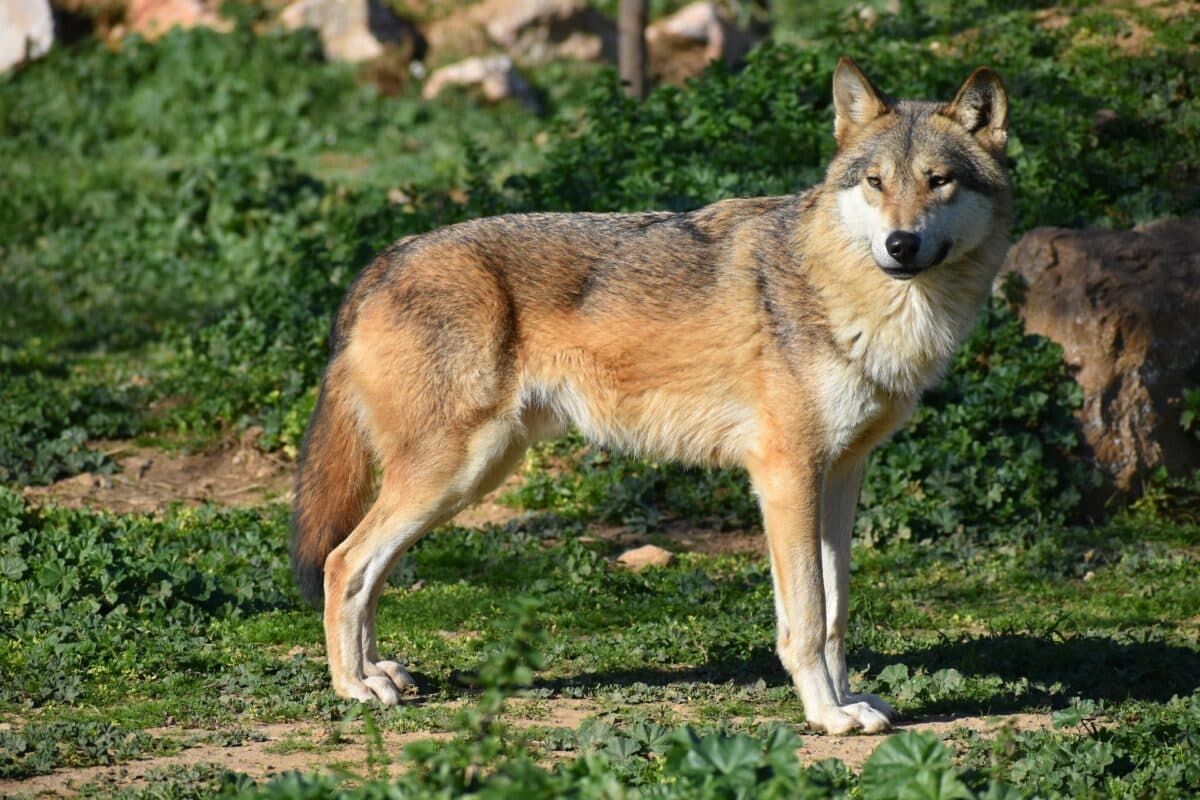
Gray wolves (Canis lupus) inspire a complex mixture of fear, respect, and fascination deeply rooted in cultural mythology and historical conflicts. These intelligent pack predators can weigh up to 145 pounds and possess remarkable endurance, capable of traveling 50-100 miles daily when hunting. Their coordinated hunting strategies, powerful jaws exerting 1,500 pounds of pressure per square inch, and haunting howls contribute to their fearsome image. The wolf occupies a unique position in human psychology, featuring prominently in countless fairy tales and legends as a symbol of wilderness danger, despite their typically cautious behavior around humans.
Verified wolf attacks on humans remain exceedingly rare in North America, with no documented fatal attacks by healthy wild wolves in the continental United States in the past century. Most wolves actively avoid human contact, with researchers often struggling to locate and study even radio-collared individuals. After near-eradication from the lower 48 states by the mid-20th century, conservation efforts have restored populations in parts of the Northern Rockies, Great Lakes region, and Pacific Northwest. These recovery efforts remain controversial, particularly among ranchers concerned about livestock losses. Modern wolf management incorporates scientific population monitoring alongside compensation programs for verified wolf depredation, attempting to balance ecological benefits with human economic interests.
6. Black Bears Common But Misunderstood
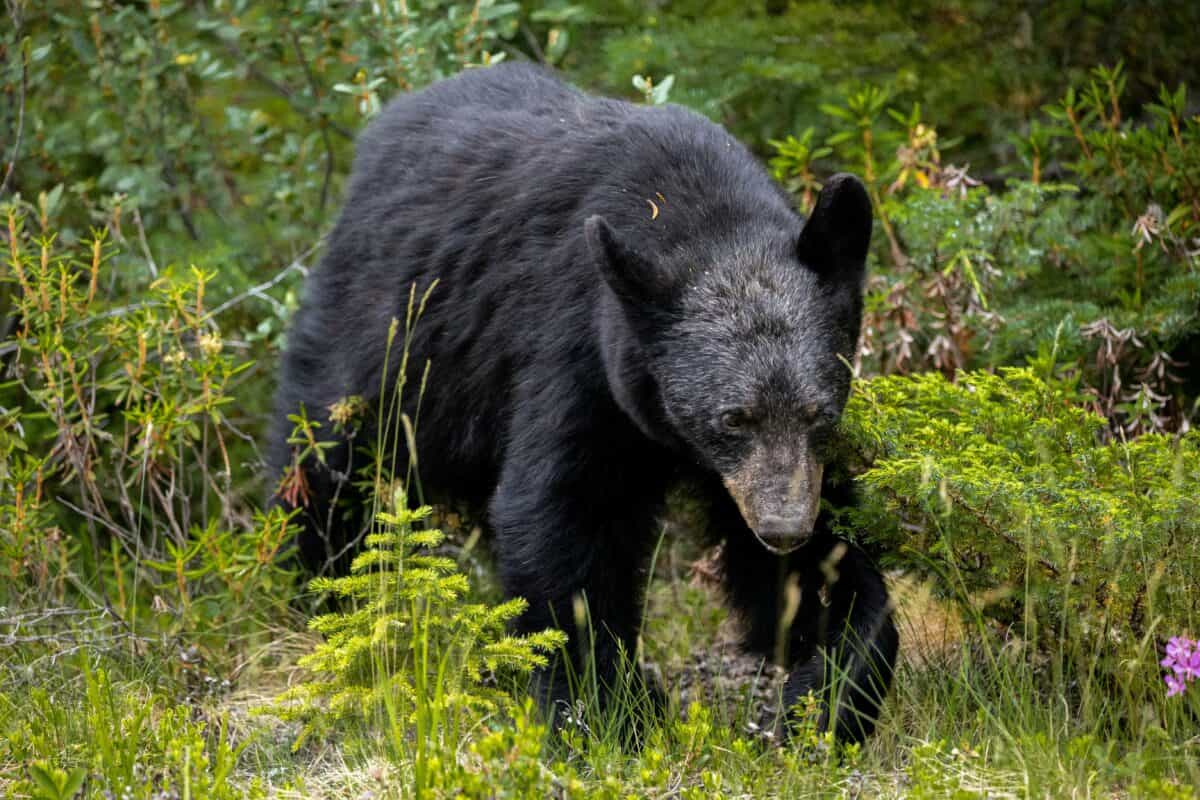
Black bears (Ursus americanus) represent North America’s most common and widely distributed bear species, yet they continue to inspire significant fear despite their generally shy nature. These adaptable omnivores can weigh up to 600 pounds, climb trees effortlessly, and demonstrate remarkable intelligence, including the ability to remember food sources for years. Their widespread presence across 40 U.S. states and most Canadian provinces means they’re encountered far more frequently than other large predators, accounting for most bear-human interactions on the continent. This visibility, combined with their imposing size and strength, contributes to persistent fears, even though their behavior rarely matches their fearsome reputation.
Unlike their grizzly cousins, black bears typically avoid confrontation when possible, with predatory attacks remaining exceptionally rare—fewer than 25 fatal black bear attacks have occurred in North America since 1997. Most negative encounters stem from bears habituated to human food sources or protecting cubs. Black bear populations have shown remarkable resilience, expanding in many regions despite hunting pressure and habitat fragmentation. Wildlife agencies increasingly emphasize coexistence strategies, including proper food storage in bear country, appropriate garbage management in suburban areas, and aversive conditioning for problem bears. These approaches have proven more effective than lethal control in reducing conflicts while allowing bears to fulfill their ecological roles.
5. Cottonmouths The Aggressive Reputation
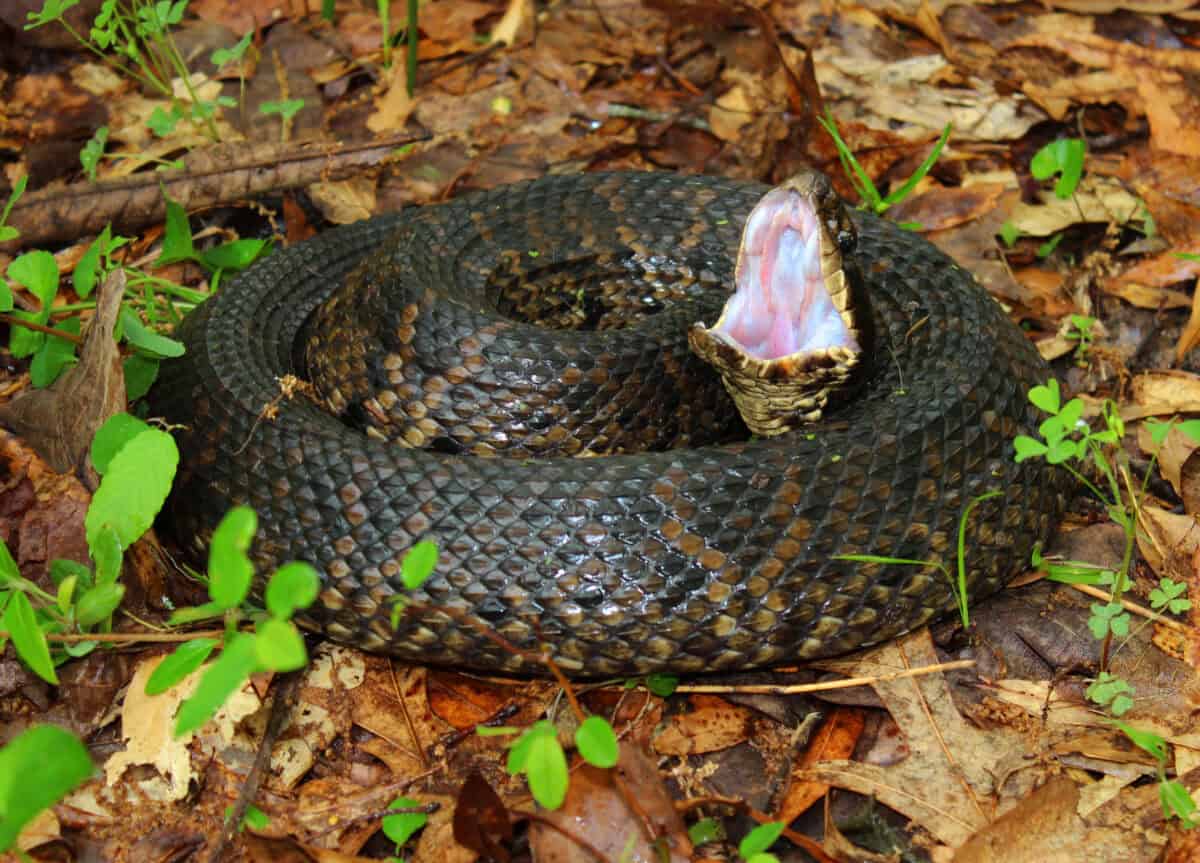
Cottonmouths, also known as water moccasins (Agkistrodon piscivorus), have earned perhaps the most fearsome reputation among North American snakes, renowned for their supposedly aggressive nature and deadly aquatic ambushes. These pit vipers grow up to 4 feet long and possess potent hemotoxic venom that can cause severe tissue damage, though fatalities remain exceptionally rare with proper medical treatment. Their habit of basking on shorelines and swimming with their heads held above water makes them highly visible in their southeastern U.S. range, while their defensive display—opening their mouths wide to reveal the white lining that gives them their name—contributes to their intimidating image.
Scientific studies have largely debunked the cottonmouth’s reputation for aggression, with research demonstrating they typically attempt to escape rather than attack when encountered. In controlled experiments where researchers approached wild cottonmouths, less than 10% exhibited truly aggressive behavior, with most either remaining still or attempting to flee. Misidentification compounds fear issues, as many non-venomous water snakes are mistakenly identified as cottonmouths and killed. Conservation concerns grow as wetland habitats continue facing development pressures across their range. Despite their fearsome reputation, cottonmouths serve vital ecological functions, controlling rodent and amphibian populations while themselves providing food for larger predators like herons, eagles, and alligators.
4. Polar Bears The Arctic Hunters
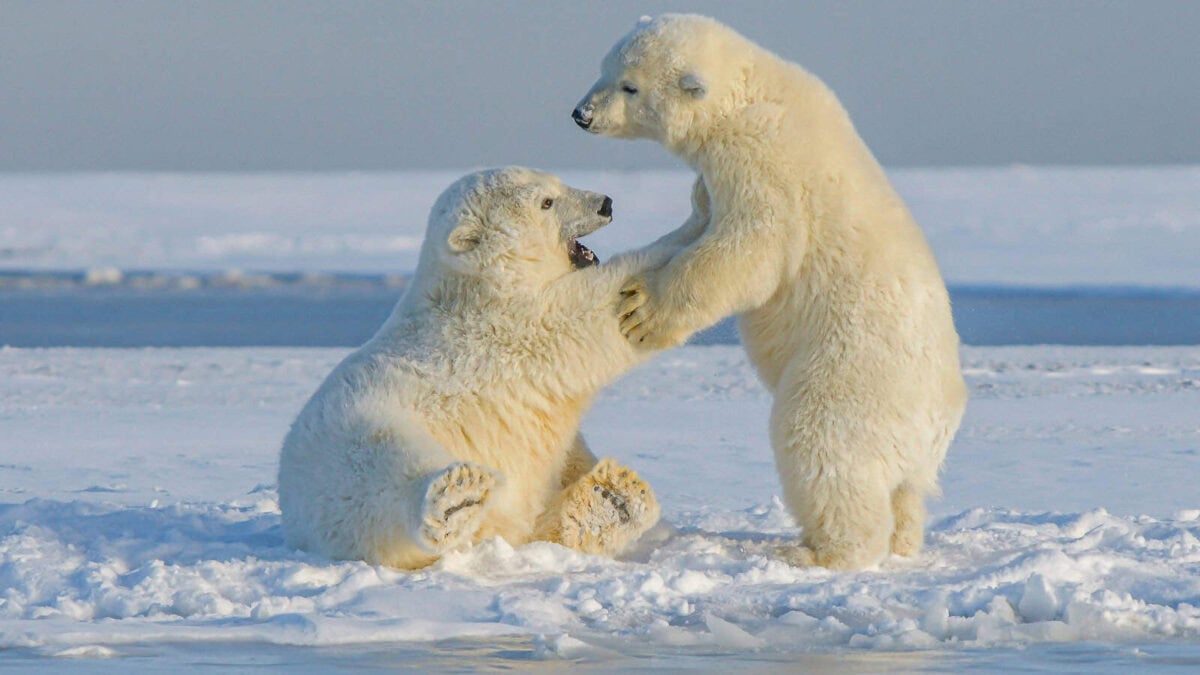
Polar bears (Ursus maritimus) stand as North America’s largest land predator and perhaps its most formidable, inspiring awe and fear in equal measure. Adult males can weigh over 1,500 pounds and stand 10 feet tall, possessing immense strength that allows them to pull 1,000-pound seals from the water. Unlike most bears, polar bears are true carnivores with predatory instincts specifically evolved for hunting seals, making them potentially more dangerous to humans than their omnivorous cousins. Their Arctic habitat in Alaska, northern Canada, and Greenland means encounters remain relatively rare, but climate change is altering this dynamic as diminishing sea ice forces bears to spend more time on land.
Communities in polar bear territory take extraordinary precautions, including dedicated “polar bear patrols” in places like Churchill, Manitoba—the self-proclaimed “Polar Bear Capital of the World.” Unlike black bears or even grizzlies, polar bears may actively stalk humans as potential prey, particularly when natural food sources are scarce. Conservation concerns have elevated the polar bear to iconic status in climate change discussions, as summer sea ice essential for seal hunting continues declining at approximately 13% per decade. This environmental pressure increasingly pushes hungry bears toward human settlements in search of alternative food sources, creating complex management challenges balancing human safety with the preservation of this vulnerable species facing an uncertain future.
3. Brown Recluse Spiders The Hidden Threat

Brown recluse spiders (Loxosceles reclusa) inspire outsized fear relative to their small size, with adults typically measuring just 1/4 to 1/2 inch in body length. These arachnids earn their fearsome reputation through their necrotic venom, which contains the enzyme sphingomyelinase D that can cause tissue death around bite sites. Unlike most spiders that use venom primarily to subdue prey, the brown recluse’s bite can cause significant medical issues in humans, including the characteristic “volcano lesion” where tissue dies and sloughs away, leaving a crater-like wound. Their native range covers much of the central and southern United States, particularly Missouri, Arkansas, and surrounding states, where they typically inhabit undisturbed areas like attics, closets, and woodpiles.
Despite legitimate medical concerns, brown recluse bites remain much rarer than commonly believed, with many reported “bites” later diagnosed as other conditions like bacterial infections or allergic reactions. True to their name, these spiders are reclusive and non-aggressive, typically biting only when pressed against human skin, such as when putting on clothing where spiders are hiding. Widespread misidentification compounds fear issues, as many common house spiders are mistakenly identified as brown recluses outside their native range. Medical treatment has improved significantly, with most bites healing without serious complications when properly managed. Prevention focuses on reducing clutter, sealing cracks in buildings, and shaking out clothing and shoes in areas where these spiders occur naturally.
2. Western Diamondback Rattlesnakes The Desert Defender
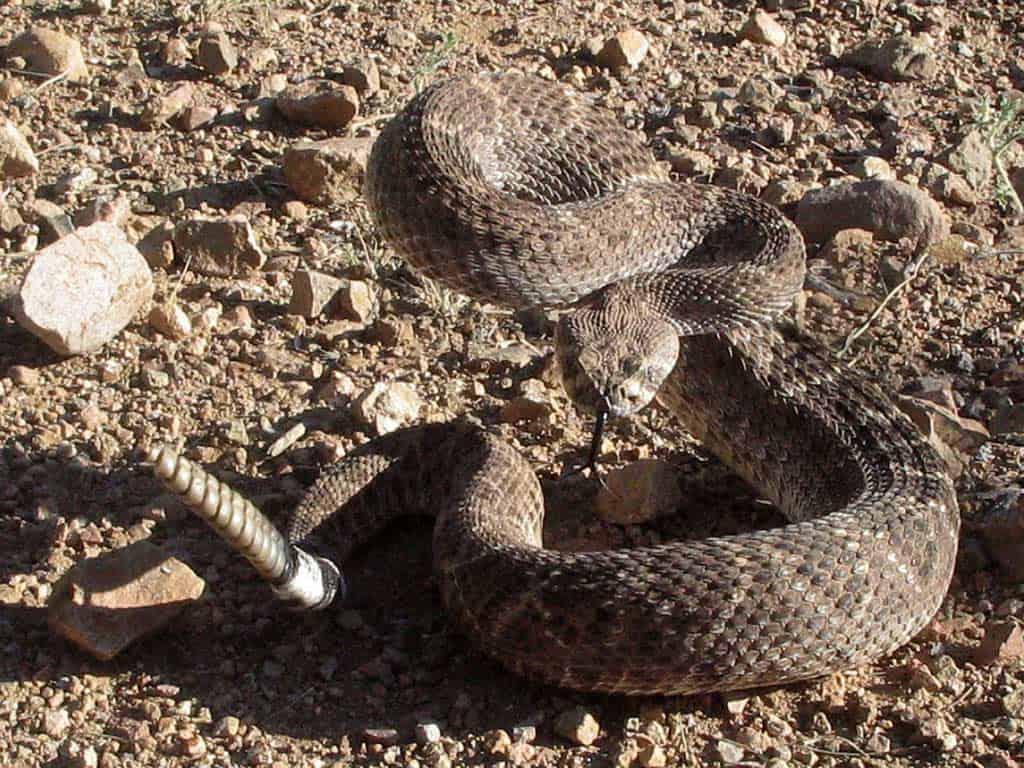
Western Diamondback Rattlesnakes (Crotalus atrox) reign as icons of danger throughout the American Southwest, inspiring fear with their distinctive warning rattle and potent venom. Growing up to 7 feet long, these imposing reptiles possess highly effective striking capabilities, able to launch nearly half their body length at speeds approaching 10 feet per second. Their hemotoxic venom destroys tissue and disrupts blood clotting, potentially causing severe injury or death without medical intervention. Their abundance across Texas, New Mexico, Arizona, and parts of California and Mexico means they account for more snakebites and fatalities than any other North American serpent, though modern antivenom has reduced death rates to less than 1% of treated cases.
Despite their dangerous reputation, Western Diamondbacks play crucial ecological roles controlling rodent populations across arid landscapes. They typically avoid human confrontation when possible, using their rattles as warning devices rather than striking without provocation. Urbanization throughout the Southwest has increased human-snake conflicts as developments expand into traditional snake habitat. Research indicates these rattlesnakes demonstrate complex behaviors, including seasonal migrations between hunting and denning grounds, sophisticated thermal regulation strategies, and even social behaviors previously unrecognized in reptiles. Conservation efforts focus on habitat preservation and public education, emphasizing the snake’s ecological importance while teaching appropriate precautions for coexistence in shared landscapes.
1. Black Widow Spiders The Notorious Arachnid

Black widow spiders (Latrodectus spp.) have achieved almost mythical status among feared creatures, instantly recognizable by their glossy black bodies and the vivid red hourglass marking on the underside of adult females. Despite their small size—females usually reach only 1.5 inches across with legs extended—their bite packs a potent neurotoxic punch. The venom contains alpha-latrotoxin, which causes a massive release of neurotransmitters, resulting in symptoms ranging from localized pain and muscle cramps to nausea, difficulty breathing, and increased blood pressure.
Fatalities from black widow bites are extremely rare thanks to modern medical treatment, and most bites occur when humans accidentally disturb the spider in woodpiles, sheds, or other dark, undisturbed areas where they prefer to nest. While female black widows are famously aggressive in defending their eggs, they are otherwise reclusive and avoid contact when possible. Public fear often exceeds actual danger, but the notoriety of the species continues to overshadow its typically non-confrontational behavior. Awareness and basic precautions—such as wearing gloves when working in storage areas and checking shoes before wearing them—greatly reduce the risk of encounters.
Conclusion: Fear, Fascination, and the Role of Education
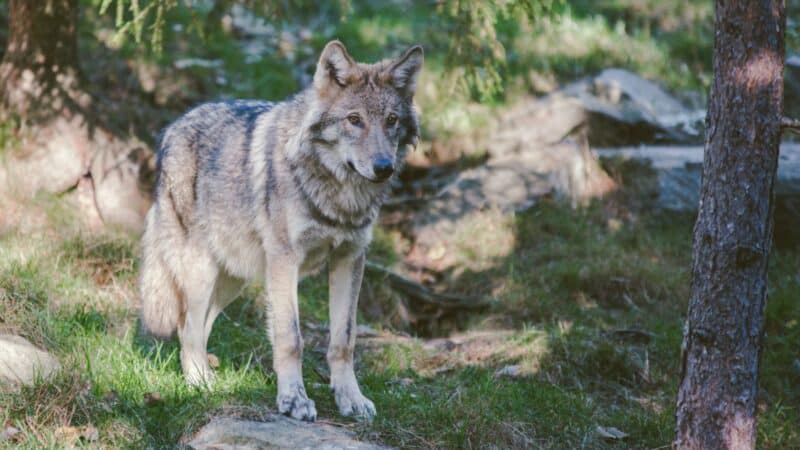
While the creatures on this list have earned their fearsome reputations through strength, venom, stealth, or sheer size, the reality is often more nuanced than popular myths suggest. Many of these animals go out of their way to avoid humans and play vital roles in maintaining ecological balance—controlling pests, shaping prey populations, and preserving natural food chains. In most cases, fear stems more from misunderstanding than genuine risk.
Education, respect, and proper precautions can transform fear into informed caution, allowing for safer coexistence with these remarkable animals. Whether hiking in bear country, swimming in alligator-inhabited waters, or working in spider-prone sheds, understanding animal behavior and maintaining awareness is key. Ultimately, these species remind us of the wild heart that still beats within North America—and our responsibility to preserve it.
- 12 Animals That Survive in Total Darkness - August 16, 2025
- 13 Animals That Thrive in U.S. Cities - August 16, 2025
- 10 Most Colorful Animals in Nature - August 16, 2025

